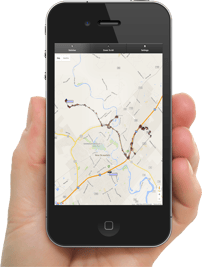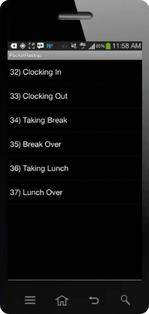 The short answer to the question in the title is “yes.” There are mobile GPS tracking apps available for mobile devices such as tablets and smartphones that your organization can use to remotely track their position.
The short answer to the question in the title is “yes.” There are mobile GPS tracking apps available for mobile devices such as tablets and smartphones that your organization can use to remotely track their position.
But, what’s different about using a mobile device-based GPS tracking app from using a dedicated GPS tracking device for your organization’s vehicles and other assets? Why would you use one system over the other?
Some key differences include:
Cost
Using traditional tracking devices requires that you purchase a separate tracking device to go with the GPS tracking software. With mobile GPS tracking apps, you can use the app-compatible smartphones or tablets that you or your employees already own.
If your organization or employees don’t already have app-compatible smart devices with GPS capability, then you’ll have to acquire such devices before you can employ a GPS tracking app for mobile devices.
Control
One of the tradeoffs between using a permanently-mounted GPS tracker and an app-based tracker on an employee’s phone is the level of control you have over the device.
A GPS tracking device that is installed inside a vehicle will transmit whenever the vehicle is on. A mobile app-based tracking system can only provide GPS coordinates if:
- The device is on.
- GPS is enabled on the device.
- The app has been started.
It’s much easier to turn off the wireless network features of phones and tablets than it is to tamper with a dedicated GPS device. Also, there’s always the chance that an employee might misplace their phone or forget to charge it—rendering the GPS tracking ineffective at tracking the vehicle or employee.
Overall, mobile app-based GPS tracking tends to provide a bit less control over the asset you intend to track than having a dedicated GPS device would. Also, some GPS tracking devices can be used to remotely disable a vehicle’s starter. This is why tracking devices are a bit better for antitheft purposes than app-based tracking.
Amount of Information Provided
Mobile GPS apps, like PocketRASTRAC, can give you a surprising amount of information. Not only can they track the current position of the employee holding the tracked phone or tablet, apps can give you:
- Current speed
- Direction of travel
- Total time/distance traveled
However, there are some things that mobile apps cannot track just yet—because smartphones/tablets cannot tie into a vehicle’s onboard diagnostics system. A dedicated GPS tracking device can connect to a vehicle’s diagnostic sensors, providing detailed information for engine temperature, RPMs, emissions, and more.
In the future, this may change as vehicles become more and more integrated with smart devices and remote management systems. However, for now, dedicated GPS trackers are better equipped to help monitor vehicle diagnostics and improve maintenance scheduling than mobile app-based tracking systems.
Tracking Employees
 One area where a mobile app-based tracker excels over tracking devices is in the tracking of an employee’s movements. As long as the employee has the app-enabled phone or tablet on their person, you can see exactly where they’re located.
One area where a mobile app-based tracker excels over tracking devices is in the tracking of an employee’s movements. As long as the employee has the app-enabled phone or tablet on their person, you can see exactly where they’re located.
This can be a useful capability for utility companies that need to make sure that employees are using their on-foot time efficiently when checking meters or handling maintenance.
Additionally, by placing the tracking system on an employee’s phone, you can be certain of their location during check-in calls.
Overall, mobile tracking apps are convenient for tracking employees, and may be less costly for organizations where employees already have app-compatible devices (like most smartphones). However, dedicated GPS tracking devices tend to be more robust for tracking vehicles, providing greater control and more data than mobile apps.
Like what you're reading? Subscribe to our blog.
Get our latest posts straight to your inbox.
Subscribe to Our Blog





